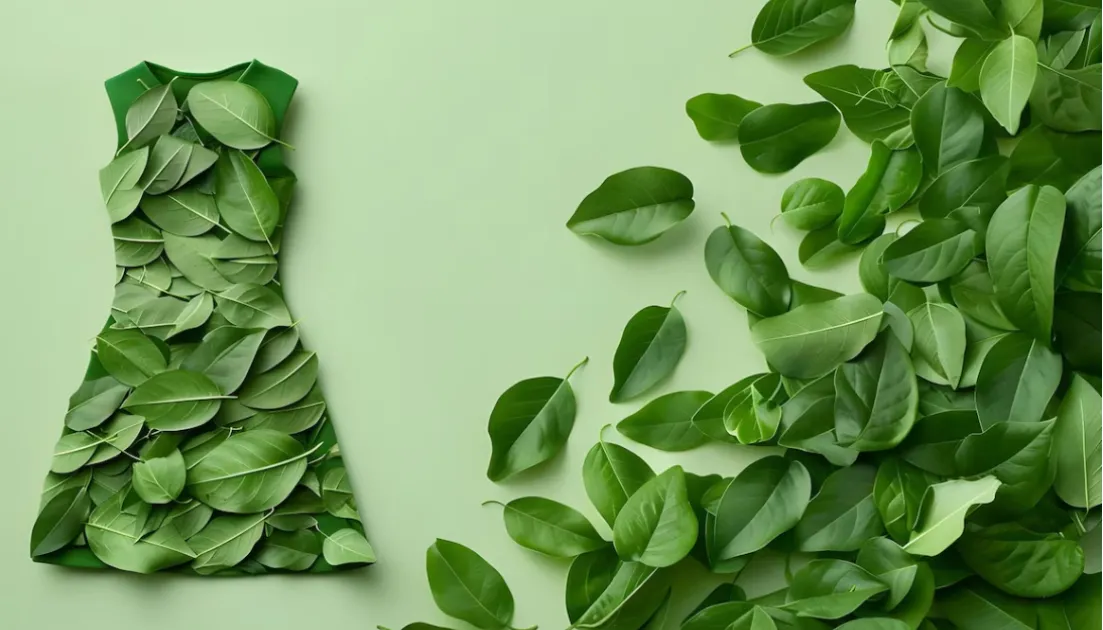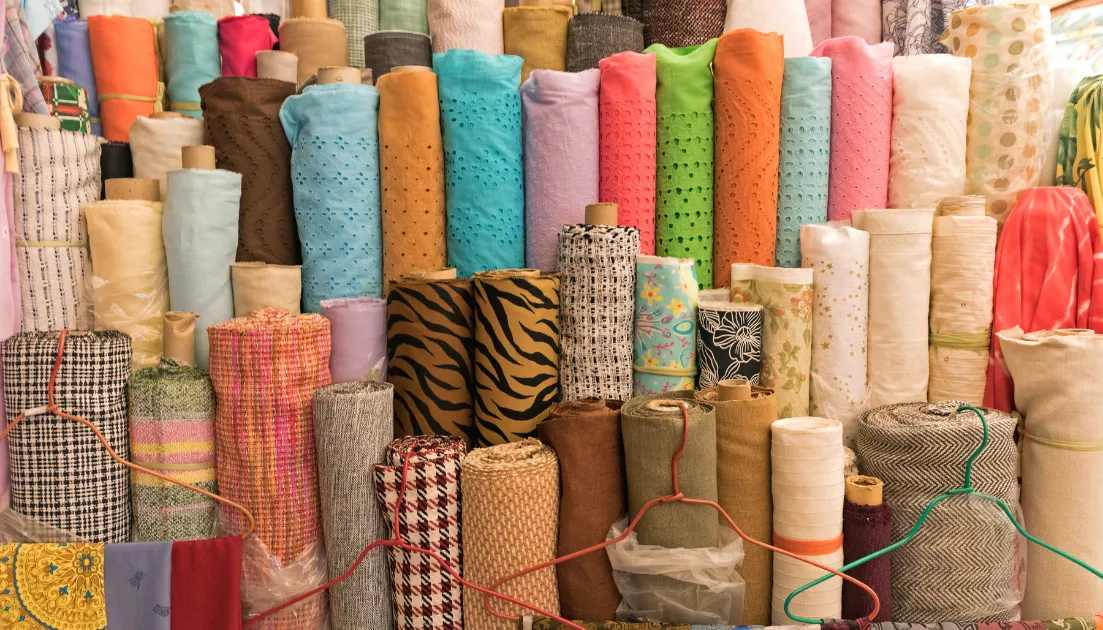Plant-Based Fashion Industry: Revolution in Sustainable Textiles

In recent years, the plant-based fashion industry has emerged as a powerful force driving sustainable innovation in the global textile market. With growing concerns about environmental degradation and ethical production methods, fashion brands and consumers alike are turning towards plant-derived materials as viable alternatives to conventional textiles. This shift represents not merely a passing trend but a fundamental reimagining of how clothing can be produced with minimal ecological impact whilst maintaining aesthetic appeal and functional performance.
The plant-based fashion movement encompasses a diverse array of materials derived from botanical sources, ranging from traditional fibres such as cotton and linen to innovative alternatives made from agricultural waste, fruits, and even algae. These sustainable textiles are redefining luxury, performance, and everyday wear whilst challenging long-established paradigms within the industry.
The Evolution of Plant-Based Materials in Fashion
The journey of plant-based textiles is as ancient as civilisation itself. Humans have utilised natural fibres for clothing for thousands of years, with evidence of linen production dating back to approximately 8000 BCE in ancient Mesopotamia. Cotton cultivation has similarly ancient roots, with archaeological findings suggesting its domestication occurred independently in both the Old and New Worlds.
However, the contemporary sustainable fashion movement has brought renewed focus and innovation to botanical materials. Today’s plant-based fashion encompasses both traditional natural fibres and groundbreaking innovations that transform unexpected plant sources into wearable textiles. This revival and expansion of plant-derived materials represents a response to the environmental crisis precipitated by fast fashion and petroleum-based synthetic fabrics.
Modern biotechnology and textile engineering have enabled remarkable advancements in developing high-performance eco-friendly fabrics that maintain desirable qualities such as durability, comfort, and versatility whilst significantly reducing environmental impact. These developments mark a pivotal shift in how we conceptualise the relationship between fashion and the natural world.
Key Plant-Based Materials Transforming the Fashion Landscape
Traditional Plant Fibres Reimagined
Whilst cotton and linen have long dominated the natural textile market, their production methods have evolved substantially to address sustainability concerns. Organic cotton cultivation eliminates harmful pesticides and reduces water consumption, whilst regenerative agricultural practices enhance soil health and carbon sequestration. Hemp has experienced a renaissance due to its minimal environmental footprint—requiring significantly less water than cotton and naturally resisting pests without chemical interventions.
These traditional materials continue to form the backbone of sustainable clothing options, though their production methods have been refined to meet contemporary environmental standards.
Innovative Agricultural Waste Textiles
One of the most exciting developments in plant-based fashion involves the transformation of agricultural waste into premium textiles. Materials such as Piñatex, derived from pineapple leaf fibres that are typically discarded after fruit harvest, exemplify this approach. Similarly, manufacturers are converting banana stems, orange peels, grape pomace from wine production, and coconut husks into viable leather alternatives and fabrics.
These innovations address two environmental challenges simultaneously: waste reduction and the creation of sustainable material alternatives. By utilising by-products that would otherwise be discarded, these upcycled textiles embody circular economy principles and demonstrate resourcefulness in material sourcing.
Algae and Seaweed-Based Materials
Marine plant sources represent a frontier in sustainable textile development. Algae and seaweed present compelling alternatives to conventional fibres, requiring no arable land, pesticides, or freshwater for cultivation. Companies like AlgiKnit are pioneering yarns derived from kelp that can be knitted into biodegradable textiles with properties similar to synthetic materials.
These marine-derived fabrics offer unique benefits: they biodegrade rapidly in marine environments (unlike microplastic-shedding synthetics), can sequester carbon during growth, and some varieties even provide natural antimicrobial properties. As textiles that reconnect fashion with oceanic ecosystems, they represent a truly innovative approach to eco-friendly clothing materials.
Environmental Impact and Sustainability Metrics
The shift towards plant-based fashion is primarily motivated by environmental concerns, with substantial evidence supporting the ecological benefits of botanical materials compared to synthetic alternatives.
Carbon Footprint Comparison
Research indicates that most plant-based textiles demonstrate significantly lower carbon emissions across their lifecycle compared to petroleum-derived synthetics. For instance, organic linen production typically generates less than half the carbon emissions of polyester manufacturing. Moreover, growing plants for fibre production actively sequesters carbon during the cultivation phase, creating a potential carbon sink effect that synthetic production processes cannot match.
The sustainable fashion industry increasingly emphasises carbon accounting as a key metric for material selection, with many brands now incorporating carbon footprint data into their sourcing decisions and consumer-facing transparency initiatives.
Water Usage and Conservation
Water consumption varies dramatically across different plant-based materials. Whilst conventional cotton remains notorious for its intensive water requirements—approximately 10,000 litres to produce one kilogram of fabric—alternatives such as hemp require just a fraction of this amount. Innovative materials derived from agricultural waste bypass the cultivation water footprint entirely, as they utilise by-products from food production.
Many brands within the ethical fashion movement are strategically transitioning to low-water plant fibres or implementing closed-loop water systems in processing to address growing concerns about global water scarcity.
Biodegradability and End-of-Life Considerations
Perhaps the most significant environmental advantage of plant-based textiles lies in their biodegradability. Unlike synthetic fabrics that may persist in landfills for centuries and shed microplastics throughout their use, properly processed natural fibres can decompose within months to years under appropriate conditions.
This biodegradability creates opportunities for truly circular sustainable clothing systems, where garments can safely return to the earth at the end of their useful life. Some innovative brands are even designing garments that are compostable, containing no toxic dyes or treatments that would compromise biodegradability.
Challenges Facing the Plant-Based Fashion Industry
Despite its promising environmental credentials, the plant-based fashion sector confronts several significant challenges that must be addressed to facilitate widespread adoption.
Scalability and Supply Chain Development
Many innovative plant materials remain in developmental phases or limited production capacity, creating obstacles to mainstream adoption. Scaling production of novel sustainable textiles requires substantial investment in processing infrastructure and supply chain development.
The transition from laboratory innovation to commercial viability represents a critical hurdle for many pioneering materials. Brands seeking to incorporate these innovations must often commit to supporting material developers through pre-orders and collaborative development agreements.
Performance and Durability Considerations
Consumer expectations for clothing performance have been shaped by decades of synthetic fabric dominance. Plant-based materials must match or exceed these performance standards to gain widespread acceptance. Issues such as wrinkle resistance, stretch recovery, moisture management, and longevity present ongoing challenges for developers of natural alternatives.
Significant research and development focus on enhancing the functional properties of botanical textiles through mechanical processing and natural treatments that preserve environmental benefits whilst improving performance characteristics.
Economic Viability and Cost Barriers
Currently, many innovative plant-based fashion materials command premium prices due to small-scale production and developmental costs. This price differential compared to conventional and synthetic materials presents a barrier to mass-market adoption.
However, as production scales increase and technologies mature, cost parity becomes increasingly achievable. Additionally, when accounting for the full lifecycle costs—including environmental externalities—many plant-based alternatives already demonstrate superior value despite higher initial price points.
Leading Innovators and Brands in the Plant-Based Fashion Space
The sustainable fashion industry includes numerous pioneering companies driving innovation in plant-based materials and their applications.
Material Innovation Companies
Companies like Bolt Threads have developed mycelium-based leather alternatives such as Mylo™, whilst Modern Meadow utilises plant proteins to create bio-fabricated materials with properties similar to animal leather. These material innovators typically partner with established fashion brands to bring their sustainable textiles to market.
Other noteworthy developers include Ananas Anam (creators of Piñatex), Orange Fiber (utilising citrus by-products), and Circular Systems (developers of Agraloop BioFibre™ from agricultural waste). These companies exemplify the entrepreneurial approach to solving fashion’s environmental challenges through botanical innovation.
Fashion Brands Embracing Plant-Based Materials
Established luxury brands such as Stella McCartney have championed plant-based fashion for decades, whilst newer entrants like Pangaia have built their identity around material innovation. Many mainstream retailers now feature dedicated sustainable collections incorporating botanical textiles.
These brands demonstrate various approaches to integrating eco-friendly fabrics, from complete commitment to plant-based materials to incremental adoption through capsule collections and material experimentation. Their commercial success helps validate the market viability of botanical alternatives and drives further innovation.
Future Trajectories and Emerging Innovations
The plant-based fashion industry continues to evolve rapidly, with several emerging trends likely to shape its development in coming years.
Bioengineering and Laboratory-Grown Materials
Advanced bioengineering approaches are enabling the development of laboratory-grown plant-based materials with precisely tailored properties. Companies are exploring the potential to “program” yeast and bacteria to produce specific plant proteins that can be formed into fibres and materials with enhanced performance characteristics.
These developments blur the boundaries between natural and engineered materials whilst maintaining plant origins and biodegradability. Such innovations represent the cutting edge of sustainable textile development.
Circular Systems Integration
The future of plant-based fashion increasingly emphasises truly circular approaches, where materials are designed from inception for complete biodegradability or recycling. Closed-loop systems aim to eliminate waste entirely by ensuring that all components of garments can be safely returned to biological or technical cycles.
This holistic approach extends beyond material selection to encompass dyeing processes, construction techniques, and business models that support circularity through repair services, take-back programmes, and end-of-life composting.
Regenerative Agriculture Partnerships
Progressive fashion brands are forming direct partnerships with regenerative agriculture producers to source plant-based materials that actively improve soil health, biodiversity, and carbon sequestration. These relationships go beyond simply reducing harm to actively restoring ecosystems through thoughtful cultivation practices.
By investing in agricultural transformation, fashion companies can secure long-term supply chains for sustainable materials whilst contributing to climate change mitigation through enhanced carbon capture in soils.
Conclusion: The Future of Fashion is Growing
The plant-based fashion industry represents far more than an alternative to conventional textiles—it embodies a fundamental reimagining of how clothing can work in harmony with natural systems rather than against them. By harnessing the inherent renewability of botanical materials and combining traditional wisdom with cutting-edge innovation, this sector offers a compelling vision for fashion’s sustainable future.
As consumers increasingly demand transparency and environmental responsibility, botanical textiles will likely continue their trajectory from niche alternatives to mainstream materials. The ongoing refinement of performance characteristics, production efficiencies, and aesthetic possibilities ensures that plant-based fashion can satisfy diverse consumer needs without compromising on style, function, or planetary health.
The fashion industry stands at a pivotal moment of transformation, with plant-based innovations leading the way toward a more regenerative and thoughtful approach to what we wear. This botanical revolution offers hope that fashion can evolve from being part of our environmental problems to becoming an integral component of their solutions.
Frequently Asked Questions
What makes plant-based fashion more sustainable than conventional materials? Plant-based materials generally require fewer chemical inputs, have lower carbon footprints, use less water (depending on the specific plant), and are biodegradable at end of life, unlike petroleum-based synthetics.
Are plant-based textiles durable enough for everyday wear? Many plant-based textiles offer comparable or superior durability to conventional materials when properly cared for. Innovations in processing continue to enhance performance characteristics whilst maintaining sustainability benefits.
How can I identify genuinely sustainable plant-based fashion items? Look for credible certifications like Global Organic Textile Standard (GOTS), OEKO-TEX, or Cradle to Cradle. Transparent brands will provide detailed information about material sources and processing methods.
Are all plant-based materials automatically sustainable? No—cultivation methods, processing techniques, and chemical treatments significantly impact sustainability. Conventionally grown cotton, for example, can have substantial environmental impacts despite being plant-based.
Will plant-based fashion eventually become more affordable? As production scales increase and technologies mature, many plant-based alternatives are expected to achieve price parity with conventional materials. Some options, like organic cotton and linen, are already available at accessible price points.





